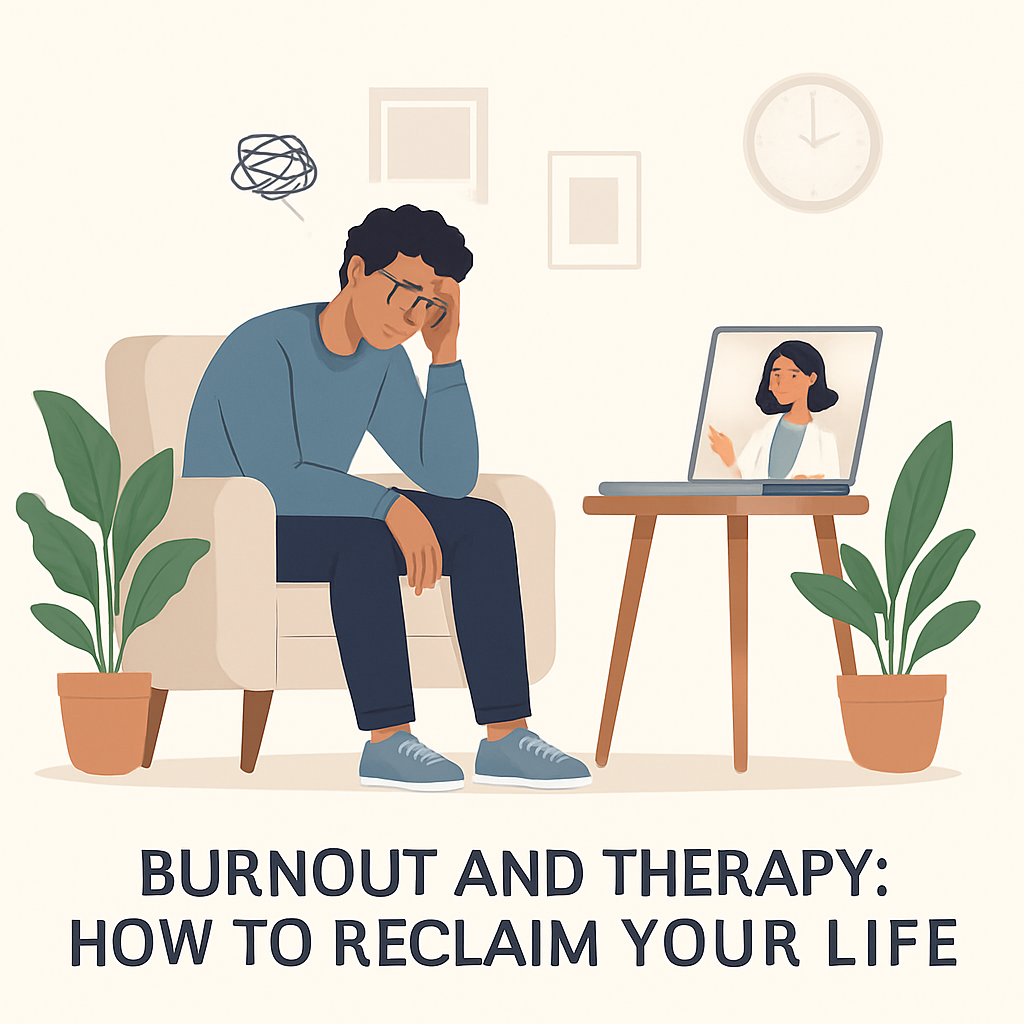Burnout and Therapy: Reclaiming Energy by Addressing Chronic Exhaustion
Burnout—often characterized by intense fatigue, emotional detachment, and decreased performance—is one of the most searched mental health topics today. So obviously you’re not alone if you’ve ended up here! If you’re feeling persistently drained or disengaged, therapy can provide the support, insight, and structure you need to rebuild your well-being.
1. Recognizing Burnout: More Than Just Being Tired
Burnout isn’t just fatigue—it’s a cycle of emotional exhaustion, reduced motivation, and cynicism toward life or work. According to the World Health Organization, it’s “a work-related phenomenon resulting from chronic workplace stress that has not been successfully managed”—marked by energy depletion, mental distance, and a loss of efficacy. You’ll know it when you feel it!
2. When Work-Life Boundaries Break Down
A key contributor to burnout is poor work-life balance. In our post, "How to Achieve a Healthy Work‑Life Balance", we explain that burnout as “a state of chronic exhaustion as a result of ineffective management of stress.” It takes a physical, emotional and relational toll.
Here are some indicators of an unhealthy work-life balance that will lead to burnout:
You have trouble ‘shutting down’ and tend to ruminate about work constantly when you’re home.
You are a people-pleaser and often say ‘yes’ to work tasks, even when you’re feeling overwhelmed.
You have poor boundaries with time management and are often feeling rushed, late or constantly busy.
It’s easier for you to say ‘no’ to yourself or your family than it is to say ‘no’ to your work or employer.
You prioritize extra work due to poor financial budgeting or scarcity mentality
Your relationships are suffering. This could show up as conflict with a boss, coworkers or feelings of disconnect with loved ones and friends.
You rarely feel fully present or at ease.
3. How Therapy Can Help You Recover and Rebalance
Therapy supports burnout recovery in several ways:
Cognitive Behavioral Therapy (CBT): Helps identify and reshape thinking patterns like “I must always be productive.”
Stress management strategies: Such as mindfulness to increase coping capacity.
Boundary-setting and lifestyle shifts: Designed to recalibrate energy, rest, and daily habits.
Self-care practices: Journaling, movement, and downtime—tools featured in Nicoletta’s post on “Self Care vs. Selfishness”, which reframes self-care as essential for avoiding burnout and thriving emotionally. (Nicoletta is a mom of two and is quickly becoming an expert on setting healthy self-care boundaries!)
4. What to Expect in Therapy for Burnout
Your first therapy session usually includes:
Exploring what led you here—workload, mental stress, or emotional fatigue.
Discussing your daily life: sleep patterns, stress reactions, coping efforts.
Clarifying short- and long-term goals—whether that’s more rest, energy, or direction.
Expect the conversation to evolve over time, with therapeutic tools introduced as appropriate.
5. Complementary Self-Help Strategies
Integrating self-care with therapy amplifies progress:
Journaling helps highlight triggers and progress.
Mindful breaks during your day interrupt rumination and reset focus.
Unplug time and leisure activities refill your emotional tank.
Rebalancing home/work routines to support recovery—not add pressure.
6. How You’ll Know Therapy Is Working
Your therapist will help you make a plan and tailor specific goals to look for. But some general progress markers to look for are:
Less emotional exhaustion.
Improved ability to enforce boundaries.
A shift toward meaningful activity rather than automatic productivity.
A sense of presence in both work and life.
Therapy is about rebuilding, not overnight fixes. Small daily gains signal real, sustained change.
Burnout isn’t a failure—it’s a signal that something in your life needs repair. Therapy helps you decode that signal and create structure for rest, connection, and purpose. With guided care and consistent practice, healing is possible—and lasting!

